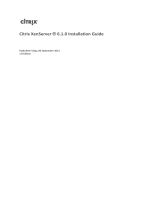
Dual-controller module configurations........................................................................................................................ 26
Chapter 5: Connect power cables and power on the storage system..................................................30
Power cable connection..................................................................................................................................................... 30
Chapter 6: Perform system and storage setup.................................................................................32
Record storage system information..................................................................................................................................32
Using guided setup..............................................................................................................................................................32
Web browser requirements and setup........................................................................................................................32
Access the PowerVault Manager................................................................................................................................ 32
Update firmware............................................................................................................................................................33
Use guided setup in the PowerVault Manager Welcome panel...............................................................................33
Chapter 7: Perform host setup....................................................................................................... 41
Host system requirements..................................................................................................................................................41
About multipath configuration...................................................................................................................................... 41
Windows hosts..................................................................................................................................................................... 41
Fibre Channel host server configuration for Windows Server................................................................................. 41
iSCSI host server configuration for Windows Server............................................................................................... 43
SAS host server configuration for Windows Server................................................................................................. 46
Linux hosts............................................................................................................................................................................47
Fibre Channel host server configuration for Linux ................................................................................................... 47
iSCSI host server configuration for Linux...................................................................................................................49
SAS host server configuration for Linux.....................................................................................................................52
VMware ESXi hosts............................................................................................................................................................ 54
Fibre Channel host server configuration for VMware ESXi.....................................................................................54
iSCSI host server configuration for VMware ESXi................................................................................................... 55
SAS host server configuration for VMware ESXi..................................................................................................... 58
Enable Multipathing on iSCSI volumes....................................................................................................................... 59
Citrix XenServer hosts........................................................................................................................................................60
Fibre Channel host server configuration for Citrix XenServer................................................................................ 60
iSCSI host server configuration for Citrix XenServer............................................................................................... 62
SAS host server configuration for Citrix XenServer................................................................................................. 64
Chapter 8: Troubleshooting and problem solving..............................................................................67
Locate the service tag........................................................................................................................................................ 67
Operators (Ops) panel LEDs..............................................................................................................................................67
2U enclosure Ops panel................................................................................................................................................ 67
5U enclosure Ops panel................................................................................................................................................68
Initial start-up problems......................................................................................................................................................69
2U enclosure LEDs......................................................................................................................................................... 71
5U enclosure LEDs........................................................................................................................................................ 73
Module LEDs.................................................................................................................................................................. 75
Troubleshooting 2U enclosures....................................................................................................................................76
Troubleshooting 5U enclosures................................................................................................................................... 78
Fault isolation methodology..........................................................................................................................................79
Options available for performing basic steps............................................................................................................. 79
Performing basic steps................................................................................................................................................. 80
If the enclosure does not initialize............................................................................................................................... 80
4
Contents




















